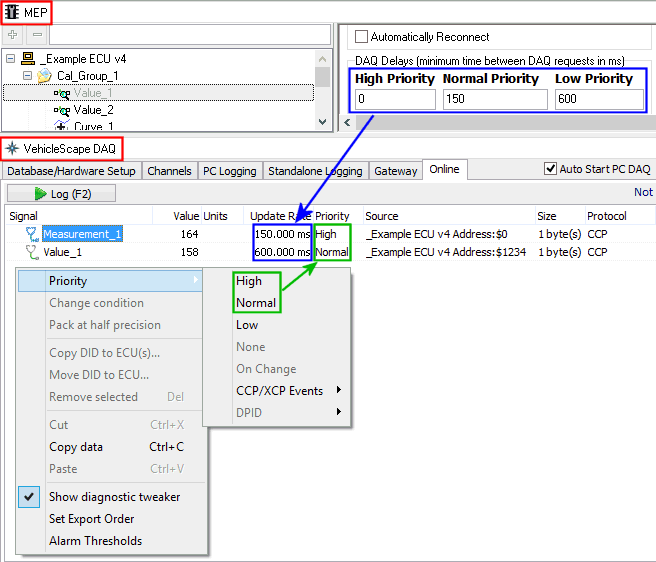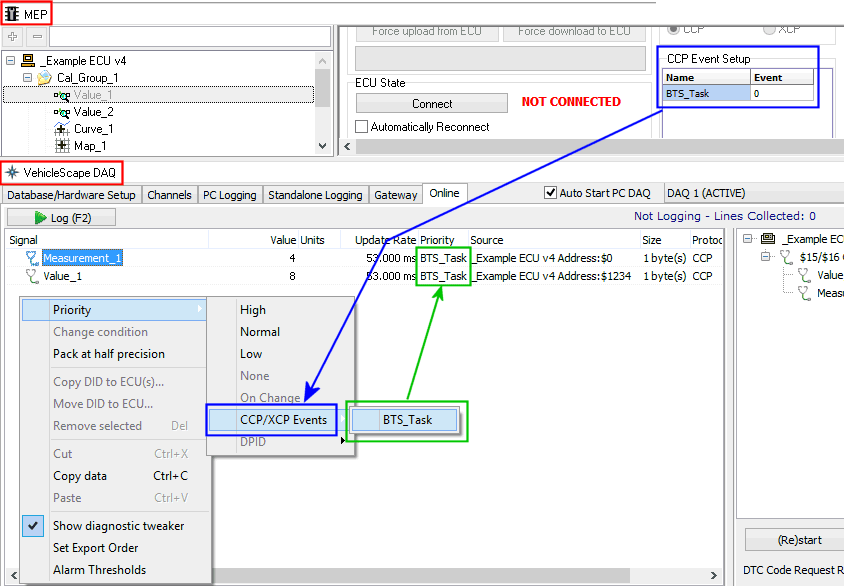 Data Acquisition with CCP/XCP
Data Acquisition with CCP/XCP
 Data Acquisition with CCP/XCP
Data Acquisition with CCP/XCP
Vehicle Spy MEP supports two methods for collecting data from an ECU using CCP/XCP. Each method has strengths and weaknesses when compared to each other as shown in Table 1.
| Category | Standard DAQ Method | Event Based DAQ Method |
|---|---|---|
| Measurement Rate | User controls how often a measurement is reported. | ECU software determines rate based upon a user assigned event. |
| Resource Usage | Each request triggers only one measurement. This can put more strain on the network and ECU if many measurements are needed. | Only one request is needed to trigger multiple measurements. This can reduce the strain on the network and ECU if many measurements are needed. |
| Synchronization | Time synchronization is unlikely for a group of measurements. | Time synchronization occurs for a group of measurements assigned to the same event. |
To perform standard data acquisition over CCP/XCP:
As shown in Figure 1, the DAQ Delays in MEP determine the update rates of A2L items in VehicleScape DAQ depending on their chosen priorities. Lower delay times will make measurements appear closer to "real time", but also take up more network bandwidth and ECU resources.

To perform event based data acquisition over CCP/XCP:
As shown in Figure 2, the ECU software determines the update rate of A2L items in VehicleScape DAQ depending on which event the items are assigned to. Events can help synchronize measurements and reduce resources allocated to DAQ'ing. One event request can trigger multiple measurements instead of using separate DAQ requests for each measurement.
The MEP Setup - DAQ Tables tab can help show how the A2L items are assigned to the ECU event tables.
